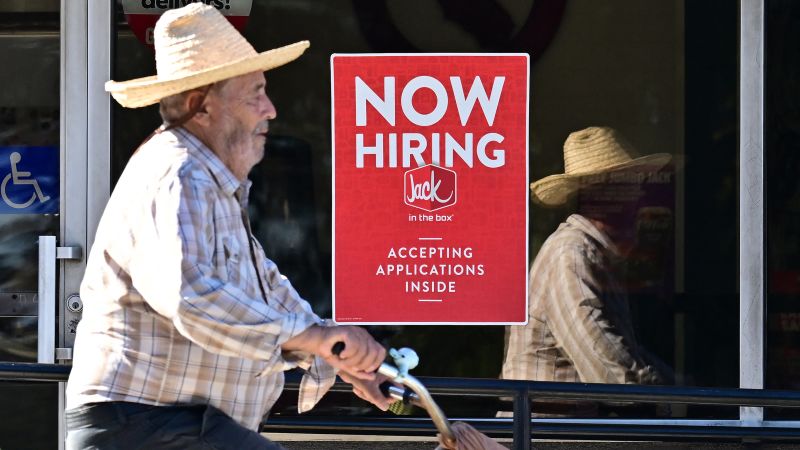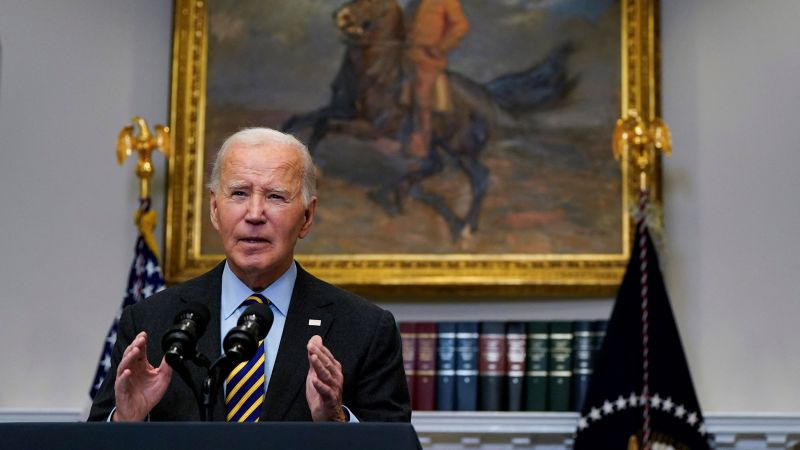—
In 2024, job growth continued to cool off, settling back into a familiar gait that was roughly in line with the pace of job creation in 2010-2019.
Through November, the US economy added about 180,000 jobs per month. The unemployment rate bumped higher but stayed near historic lows.
Those headline measures helped lend some reassurance that the resilient and growing US economy is slowly heading toward that elusive “soft landing” of reining in inflation without cratering into a recession.
How that likely shaped up through December should become a lot clearer on Friday when the Bureau of Labor Statistics releases the final jobs report for 2024 at 8:30 a.m. ET.
Economists expect that job growth last month was solid — but relatively tame — at 153,000 and that the unemployment rate didn’t budge from 4.2%, according to FactSet consensus estimates.
“2024 captured a very stable labor market, a labor market where supply and demand were in balance for the first time, post-pandemic,” Nela Richardson, chief economist at payroll company ADP, said Wednesday.
While steady, sturdy and solid were ongoing themes in the jobs market through this past year, 2025 has the potential to be anything but.
“I don’t think we’ll stay stable,” she said. “Economies are known to change very quickly.”
In recent months, the typical churn that’s seen in healthy labor markets started getting more gummed up: Hiring activity dropped off to a decade low, more and more workers were staying put and jobs searches were taking a lot longer.
“This is still a pretty healthy labor market; it’s also pretty bifurcated,” said Cory Stahle, economist at Indeed Hiring Lab. “Your experience with the labor market is going to depend largely on what industry or occupation you’re working in.”
The slowdown and hesitation have been attributed to myriad factors, including post-pandemic normalization, job growth driven by a few industries, high interest rates, technological advancement and just plain uncertainty about the direction of the economy, global events and President-elect Donald Trump’s potential policies.
Industries facing headwinds in 2025
Some of those biggest question marks could be answered in the coming months — especially to the extent of trade, immigration, tax and fiscal policies that could bolster some industries or drastically hamstring others.
“The labor market doesn’t happen in a vacuum,” said Elise Gould, senior economist at the Economic Policy Institute. “Right now, things are pretty strong (by measures such as wage growth, high employment-to-population ratio and low unemployment), but I see no reason why those would change unless there are huge policy changes.”
“And it looks like the incoming administration is going to make some changes to policy, which could cause some weakness in the economy,” she added.
Gould is not alone among economists and others who have sounded the alarm bells as to how pledges such as stiff tariffs, mass deportations and plans to “cut the government down to size” could cause inflation to reaccelerate and raise the cost of living; exacerbate job shortages in industries such as agriculture, health care, food service, child care and construction; and hamper agencies that provide services to the general public.
Some of the industries facing headwinds have been driving much of the job gains during the past year.
From January through November, private health care and social assistance accounted for 75% of overall job gains: 41% in health care, 21% in government and 13% in leisure and hospitality, a review of Bureau of Labor Statistics data shows.
“Already somewhat concerning, this [tri-industry] concentration could become even more worrisome in 2025 if these industries run out of steam — and there are indications that they are,” Stahle and Indeed Hiring Lab economists wrote in a recently released 2025 outlook.
Job gains have been slowing as these industries have caught up to pre-pandemic levels, and they very well could soften further if Trump follows through on those campaign promises, they wrote in the outlook.
The glass-half-full outlook
There is plenty of optimism about the labor market picking up even further this year, said Julia Pollak, chief economist at ZipRecruiter.
“Perhaps the increase in [job] openings in November is the first signal about hiring improving in ’25,” she said, referencing the Job Openings and Labor Turnover Survey report that showed an increase in available jobs.
The No. 1 reason to be bullish this year is that the Federal Reserve started cutting interest rates in 2024, she said.
Monetary policy acts on a lag, so the three cuts to date are still working their way through the economy. And, more cuts could be coming down the pike.
“The share of banks prepared to lend to consumers keeps going up, various retail outlook surveys show an improvement among retailers, and indicators like total vehicles sales suggest that lower borrowing costs are improving affordability meaningfully enough now to increase sales and activity,” she said.
The ripple effect in the labor market may lag a little, Pollak said, noting that companies want to make sure sales growth is durable before they add more employees.
“But the longer those improvements are seen, the more and more likely a labor market rebound can happen,” she said.
Also, hiring activity is picking up in the financial sector, she said, noting the markets’ recent surge as well as anticipation of looser regulations around deal-making.
And it’s also very possible that the “government” sector could continue to see job growth, despite being put in the crosshairs by the incoming administration, she said.
Most of those gains have been concentrated at the local and state level, which accounted for a 12.3% and 6.6% share of overall job gains, BLS data shows. Federal jobs accounted for just 2%.
“A huge fraction of it is in place like Texas, Florida and Nevada — most government hiring reflects population,” she said. “You have more public school teachers when you have kids in the district; you have more police when you have more businesses and tax revenue and people moving.”
“I don’t see that being targeted by government efficiency departments. That will continue and it will just reflect the fact that people are moving and demanding services, schools and policing,” Pollak said.





